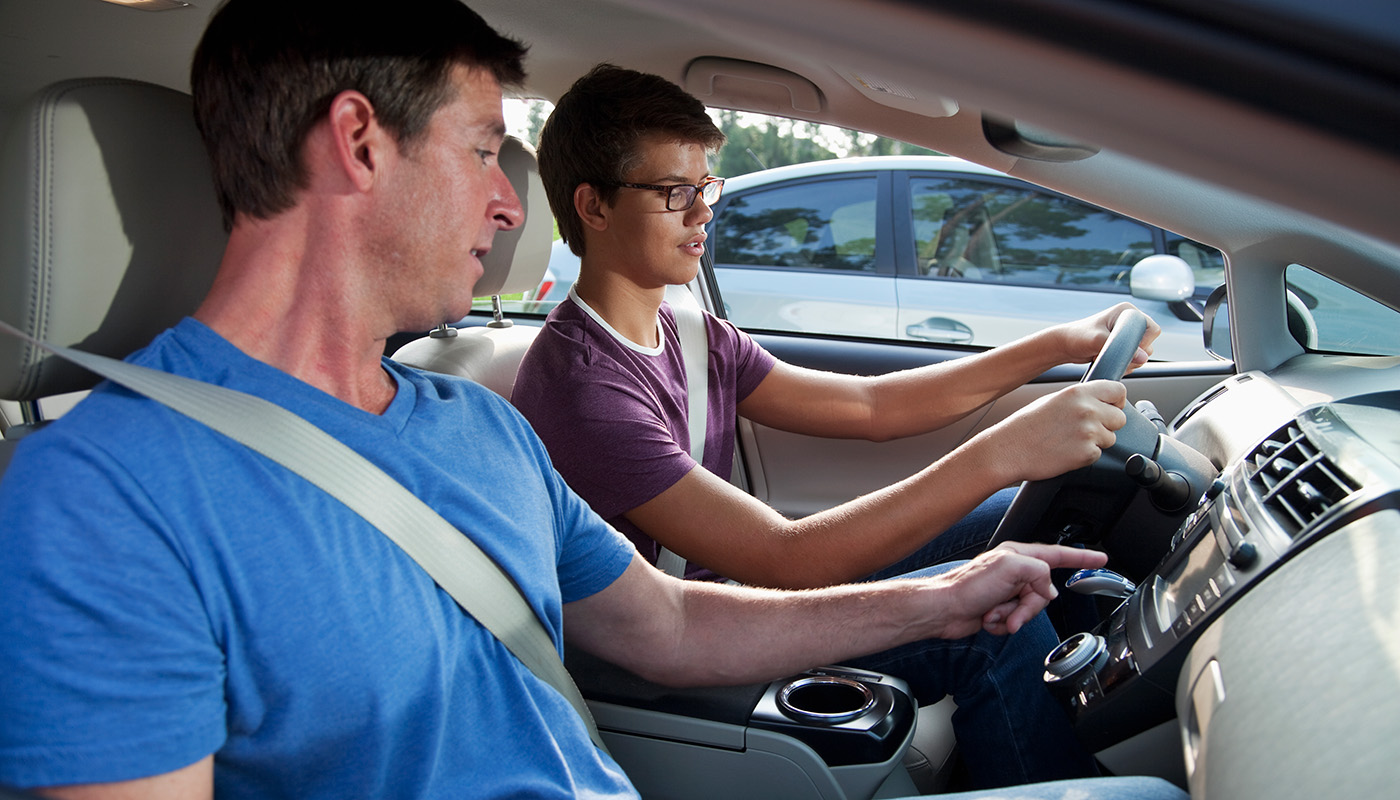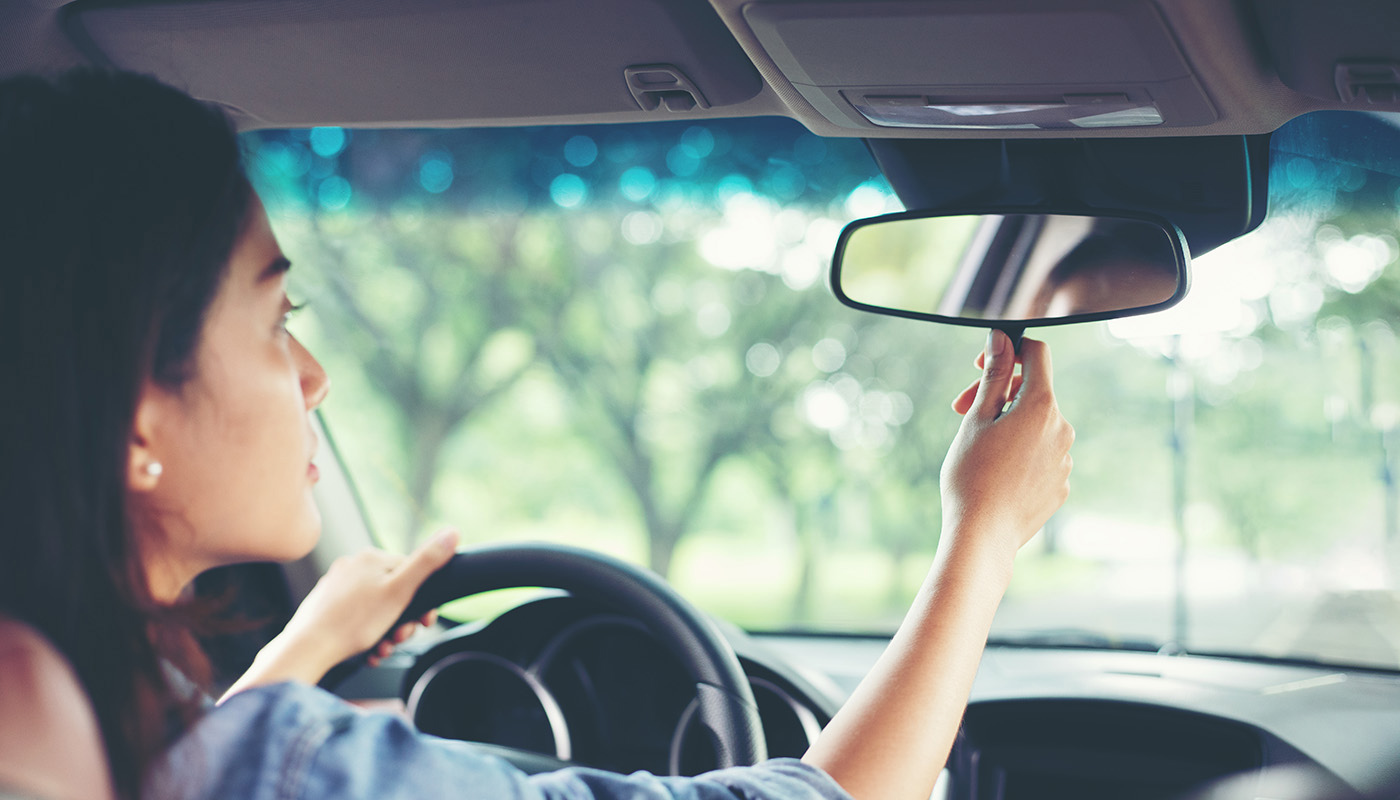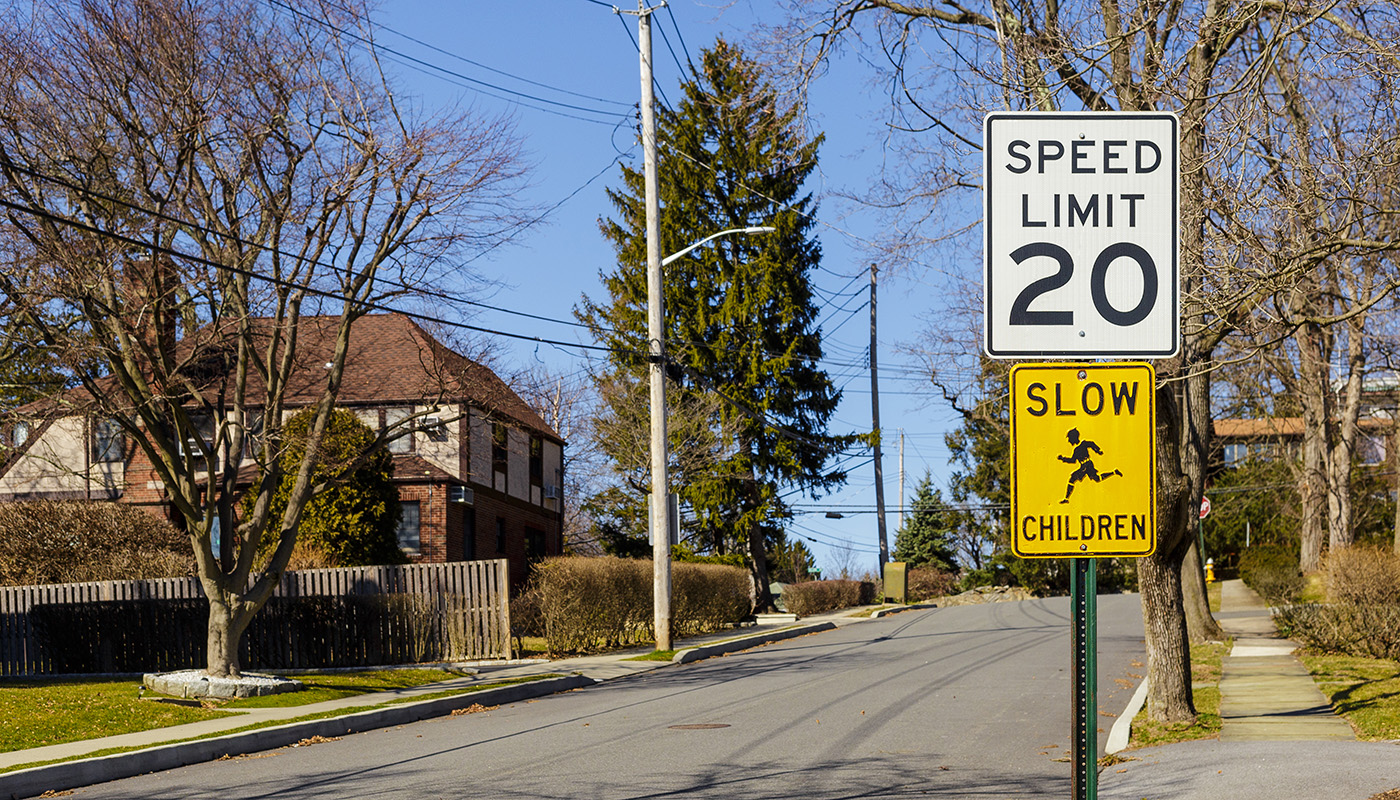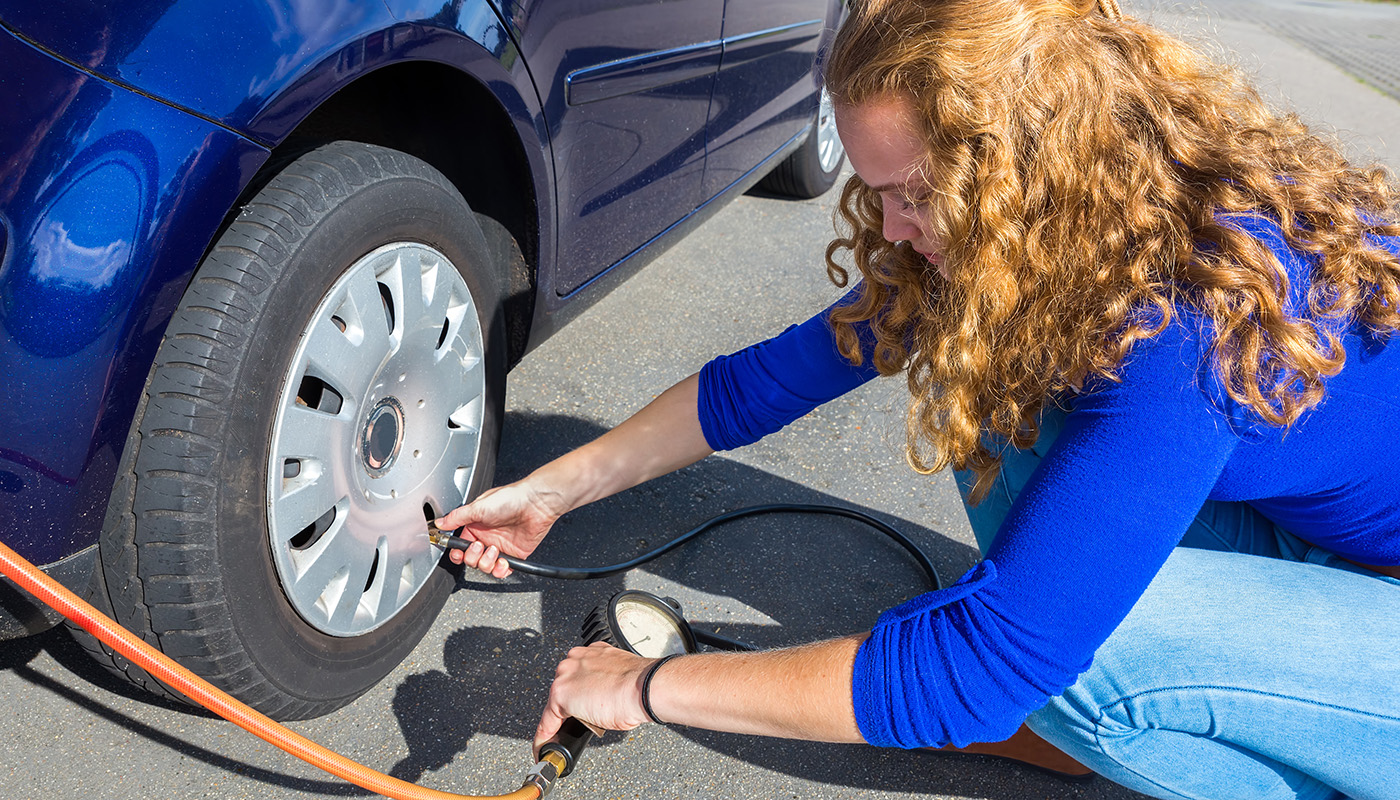Safe Driving for Teenagers: Safety Tips and Resources
Here are some tips for your teen driver that can help them avoid crashes and stay safe on the road.
 iStock
iStock
A driver’s license is a rite of passage for many teenagers. Driving is freedom; with a driver’s license, a teen can now go where they want and no longer must rely on a parent to give them a ride. But with all the freedom that comes with a driver’s license, drivers also have a major responsibility to protect themselves and others while they’re behind the wheel.
According to the Centers for Disease Control and Prevention (CDC), approximately seven teenagers are killed in car crashes every day in the United States. The risk of a fatal car crash is almost 3 times higher among teen drivers ages 16–19 than among drivers ages 20 and older. Crash risk is about 1.5 times higher for 16-year-old drivers than for drivers ages 18–19, according to the CDC.
Common causes of teenage car crashes
Teen drivers, especially male drivers between the ages of 16 and 19, are at a greater risk than any other age group for motor vehicle crashes. There are seven major factors that contribute to the rate of teen car crashes:
- Driver inexperience
- Distracted driving
- Not wearing safety belts
- Drinking and driving
- Reckless driving and other risky behaviors
- Driving with teen passengers and peer influence
- Texting and driving
How to help develop safe driving habits for teens
 iStock
iStock
One of the best ways to teach your teenager to drive safely is to set a good example when you yourself are driving. New drivers learn by example. When you model good driving habits, your teenage driver is less likely to pick up bad habits. Abiding by all the rules of the road, obeying the speed limit, always wearing a safety belt and using your turn signal to alert other drivers to your actions are good habits that can be exhibited for teenagers.

Driver education classes are also beneficial, teaching teenage drivers the rules of the road and how to safely operate a vehicle. There are three phases in graduated driver licensing (GDL): a supervised learner’s permit, an intermediate or provisional license and a full unrestricted license.
While GDL and licensing laws vary by state and often establish minimum requirements, AAA recommends:
- Passenger limits: No more than one non-family passenger under age 20 for at least the first six months of provisional licensure.
- Night driving limits: No driving between 9 p.m. and 5 a.m. for the first six months of licensure.
- Mandatory practice: AAA recommends that a teen should have a learner’s permit for a least a year and a minimum of 50 hours of practice driving, with 10 hours at night.
AAA offers new driver education courses and supplemental learning online. You can also search for AAA Approved Driving Schools near you. There’s also an informational online webinar called StartSmart for parents of teens who are—or soon will be—learning to drive. And one more thing: AAA offers free memberships for teens.
AAA is a leader in developing educational and safety programs for motorists.
Learn MoreSafety tips for teenage drivers
While getting a driver’s license is an exciting time for teens, it can simultaneously make parents anxious. Ease the worry by having new and inexperienced drivers follow these helpful safety tips.
1. Study defensive driving techniques.
You can avoid car crashes and help lower your risk behind the wheel by practicing the tenets of defensive driving. Defensive driving involves anticipating other drivers’ actions, maintaining a safe speed, keeping an appropriate distance from other vehicles and watching the road ahead for possible risks and hazards.
Here are some additional tips for practicing defensive driving:
- Remain focused: One in 5 crashes involves driver distraction. Distractions such as eating, drinking, talking to passengers, reading, grooming, reaching for items, texting or using electronic devices can take a driver’s focus off the road.
 iStock
iStock
- Observe your surroundings: Be sure to check your rearview and side mirrors frequently. Scan the roadway for traffic and hazards ahead.
- Keep a steady pace: Always obey the speed limit, and travel with the flow of traffic. Avoid making sudden stops, rapid changes in speed and unexpected lane changes. Maintain at least one car’s length of distance between your car and the vehicle in front of you for every 10 mph of traveling speed.
- Be aware of blind spots: Be aware of large trucks; drivers of large vehicles can sometimes have trouble seeing other vehicles and pedestrians.
- Increase visibility: In addition to staying out of other motorists’ blind spots, increase your own vehicle’s visibility by using turn signals, turning on headlights at dusk or during inclement weather, and ensuring that all vehicle taillights and headlights are functioning properly.
2. Avoid distractions.
Distracted driving negatively affects driving performance for all drivers, but it can be especially dangerous for young, inexperienced drivers. In 2019, among U.S. high school students who drove, 39% said they texted or emailed while driving at least once during the prior 30 days.
Stay alert on the road by not eating, drinking, reaching for items (such as a cellphone), texting or performing other tasks while driving that will take your focus away from the road. Driving requires quick instincts and reactions. Never drive under the influence of alcohol, illegal drugs or prescription medication that may cause drowsiness.
3. Prepare for nighttime driving.
 iStock
iStock
The rate of fatal crashes at night among teen drivers (ages 16–19) is about 3 times higher than that of adult drivers, per mile driven. Before driving solo at night, be sure to get plenty of nighttime driving practice with an adult supervisor. If possible, don’t drive after 9 p.m., as most fatal nighttime crashes occur between 9 p.m. and midnight. (Some states have laws limiting teen nighttime driving within the first six or 12 months of their receiving a provisional driver’s license.)
Finally, if nighttime trips are necessary, be sure to avoid driving when you’re tired or sleepy. Try to plan trips and routes in advance—and map out a safe, well-lit route to and from your destination to help ensure a safe ride.
4. Follow traffic laws.
 iStock
iStock
First things first: Buckle up. Teens are one of the age groups least likely to wear safety belts, so make buckling up for teen drivers and passengers a priority. Nearly every state fines drivers and passengers—sometimes as much as $200—for not wearing safety belts. Moreover, safety belts save an estimated 15,000 lives annually, according to the National Highway Traffic Safety Administration.
Your vehicle’s speed is another factor to keep in mind. Follow all posted speed limits, as excessive speed reduces the amount of time a driver has to react to road hazards and avoid crashes. According to the National Safety Council, almost a third (29%) of traffic fatalities in 2021 involved speeding.
Finally, many states restrict the number or ages of passengers that a teen can have when they first get their provisional license. Learn the rules in your state to prevent potential distraction and avoid breaking the law.
5. Understand basic car maintenance.
 iStock
iStock
Learning about car maintenance will help keep your teenage driver’s vehicle in working order and prevent breakdowns. Here’s a list of some basics for teens to know before getting behind the wheel:
- Check vehicle fuel level.
- Maintain proper air pressure and inspect tires each time the car is driven.
- Check all fluid levels (oil, brake, power steering, windshield washer, engine coolant).
- Get an oil change every 3,000 miles or as recommended in the vehicle’s owners manual.
- Keep mirrors and windows clean.
The experts at AAA Approved Auto Repair facilities will give your vehicle the attention it needs.
Make AppointmentMake the AAA PROMise to stay safe on the road.
The AAA PROMise program was developed to help teenage drivers and their passengers stay safe on roadways during prom and graduation season. The AAA PROMise encourages young drivers and their parents or guardians to talk about the dangers of underage drinking, drug use, and impaired or distracted driving. There are also resources available for high schools to help keep teens safe during two of high school’s most exciting times—prom and graduation.
Questions? Get in touch with a AAA Agent.
Since its founding more than 100 years ago, AAA has provided safety education programs for the driving public. To learn more about the resources available for teenage drivers or brush up on safe, responsible driving yourself, contact a AAA Agent today.
This information is being provided for general informational purposes only. The Auto Club Group does not assume any liability in connection with providing this information.